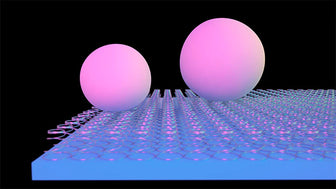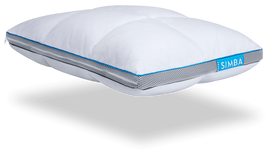We all know sleep is important – it’s what refreshes us to face every new day and depriving people of it is a well-known form of torture. You might also think that all sleep is the same: you go to bed, you close your eyes and that’s it. But the reality is much more complex.
It starts simply enough; sleep is either REM sleep or non-REM (NREM) sleep. But REM sleep comprises one stage, while NREM sleep features three (drowsiness, light sleep, and deep sleep) which gives us four different sleep stages in total. But that’s not all; we go through each of these four stages multiple times during the night, and completed rounds are called sleep cycles, and we experience four to six cycles a night… By now you might be starting to understand why sleep isn’t as simple as you thought. But if you’re looking for the ultimate REM sleep definition, you’ve come to the right place.
THE DISCOVERY OF REM SLEEP
The two types of sleep, REM sleep and NREM sleep, were first discovered in 1952; the term REM sleep was coined by sleep scientists (working with simple electrodes on the scalp) who noticed the way the way our eyes move very quickly from side to side during a particular sleep phase, while remaining closed – hence ‘Rapid Eye Movement’ became the name for this phase of sleep. So, what does Rapid Eye Movement sleep mean? Scientists have only recently begun to understand the vital role played by this stage of sleep; with the advent of MRI scans in the early 2000s, scientists were able to establish 3D images of brain activity, which led to much more detailed analysis of brain wave activity than previously possible. Scientists soon discovered that REM sleep features a similar level of brain activity to when we’re awake; indeed, recent MRI scans have shown that certain parts of the brain are up to 30% more active during REM sleep than when we’re awake. So while your body sleeps, your brain could more accurately be described as awake!
WHAT IS RAPID EYE MOVEMENT SLEEP?
Rapid Eye Movement sleep, meaning REM sleep, is part of each complete sleep cycle, and often starts about 90 minutes into sleep, usually lasting for around 10 minutes. But each REM stage lasts longer as you continue to sleep, sometimes even lasting up to an hour.
So, what is REM sleep in human terms? Physically, we experience increased heart rate, rising blood pressure, and faster breathing in REM sleep, as well as the rapid eye movement. But in stark contrast to our eyes, our legs and arms are unable to move during this stage; this inability to move (apart from occasional muscle twitches) occurs because our brain sends signals to our spinal cord to temporarily paralyse the limbs (it’s thought this happens so that we don’t act out our dreams and potentially hurt ourselves or others, more on that later).
But it is in the brain that we see the most extraordinary levels of activity. Analysis shows a strong activation of the visual, motor, emotional and autobiographical memory regions of the brain, along with a corresponding de-activation of areas controlling rational thought. This increased brain activity is when we’re most likely to have our most vivid dreams, the ones we’re most likely to remember – hence the temporary paralysis. So, if you ever wake up and remember a dream clearly, it’s likely you woke up from a stage of REM sleep.
THE MEANING OF REM SLEEP
At each stage of sleep, different and important things happen in our body. It’s not so hard to imagine what might be happening in the phases of deep s NREM sleep (recuperation, growth, healing) but what is REM sleep’s meaning?
Current theories about REM sleep suggest it works hand in hand with NREM sleep to keep us physically and mentally healthy. As we fall asleep, the thalamus – the sensory receptor deep in the brain – blocks out the signals such as sight, sounds and touch that link us to the world, so that we can relax into deep, NREM sleep. This allows the brain to move recent memory from short-term storage, which is fragile, to a more permanent and therefore safer location. In short, during the day we receive and make memories of the outside world; in deep sleep, we store and distil those memories.
In REM sleep, it’s thought we play out both our past and present on the big screens of our brains – a sort of autobiographical show - in other words we dream. And this is how we integrate and process all our new emotions and memories into our existing memory bank. And of course, life goes on every day, making yet more new memories to be updated and integrated into our memory bank; it’s an endless process. As a result, the brain needs another night of sleep and all its varied stages, to update our memory network on the events of the day.
IS RAPID EYE MOVEMENT SLEEP GOOD FOR US?
There may be some truth behind the old adage that ‘sleeping on something’ will make you feel better or help you make a decision. Because in the last 20 years experts have become convinced that REM sleep increases crucial social and intellectual skills. So, what does REM sleep do for us humans?
EMOTIONAL IQ
Recent studies have shown that REM sleep increases our ability to ‘read’ the world around us, understanding social and emotional signals such as facial expressions and behaviour.
DREAMING TO HEAL
The amygdala is a group of brain cells that processes our emotions, and it becomes increasingly active during REM. Although dreaming can occur during many sleep stages, the most vivid ones are likely to occur during REM. It’s thought that dreams can help with emotional processing, a sort of overnight therapy. Dreaming helps take the painful sting out of traumatic, emotional episodes you’ve experienced during the day, offering emotional resolution when you wake the next morning. So it’s not ‘time’ that heals all wounds, it’s sleep! REM dreaming is also accompanied by a change in chemicals in your brain; a stress related chemical called noradrenaline (which we know as adrenaline) is shut off – it’s the only part of the day or night that your brain is devoid of it. So, the emotional memory reactivation experience of REM sleep happens in a brain stress-free brain, allowing you to unwrap any painful emotions wrapped up in your memories. Interestingly recent studies of patients suffering from PTSD has shown them to have abnormally high levels of adrenalin, and when this is reduced, they experience healthier REM sleep and the reduction of nightmares, so they’re no longer afraid to go to sleep.
CREATIVITY AND PROBLEM SOLVING SKILLS
REM sleep integrates new memories with previous ones and past learning, creating new insights as unrelated pieces of information are interlinked. This ability to join up different information with numerous and creative combinations is what differentiates us from computers; we can wake up the next morning with new solutions to problems, or full of new and original ideas. It certainly worked for Paul McCartney, who admitted that the Beatles’ hits ‘Yesterday’ and ‘Let It Be’ had come to him just as he woke up.
WHAT HAPPENS WITHOUT REM SLEEP?
Research suggests that concentration and memory deteriorate without quality REM sleep, and we know the positive effect REM sleep has on creativity and problem-solving; other symptoms may include low mood, high sensitivity, and an increased risk of migraines, although these could be due to overall sleep deprivation. But the medical profession continues to study the effects of REM sleep on all sorts of conditions such as Post Traumatic Stress Disorder (PTSD), ADHD and depression.
WHAT’S REM SLEEP’S IMPORTANCE FOR CHILDREN?
REM sleep is thought to be integral to learning, emotional, and memory processing, as well as brain development – which makes it essential for children; for example we know that during REM sleep the brain consolidates what it has learnt during the day and develops it as memories, which is key to implicit learning, a type of learning we’re not even aware of such as remembering how to ride a bike or swim. All in all it also helps develop the central nervous system’s structure, as well as processing neural stimulation. Research suggests that REM in childhood impacts an individual’s pain tolerance, vision, and behaviour.
HOW MUCH REM SLEEP DO YOU NEED?
Unlike sleep in general, there are no official guidelines on how much REM sleep people need. On average, adults experience two hours of REM sleep per night; this is around 20% of their overall time asleep. This can vary significantly between individuals; early research suggests that the length of REM sleep increases or decreases depending on the needs of the individual. It’s also notable that the younger someone is, the more REM stages they’ll have. In addition, the amount of REM sleep a person has can change daily. It can be influenced by activity level, body condition, along with other factors.
IS REM OR DEEP SLEEP BETTER?
“Innocent sleep. Sleep that soothes away all our worries. Sleep that puts each day to rest. Sleep that relieves the weary labourer and heals hurt minds. Sleep, the main course in life's feast, and the most nourishing.” Macbeth So says Shakespeare - and how wise he was. What he didn’t know though, is that both types of sleep are vital to our health and well-being - and any imbalance results in a myriad of physical and mental issues. However, experts suggest that deep sleep is notably vital for remaining healthy, while REM sleep helps heal life’s emotional wounds and gifts solutions to problems. Experiencing progressive cycles of all sleep stages - going through multiple cycles where the length of each stage varies - is what is likely to help you feel rested and ready for the morning. To encourage healthy sleep, including REM sleep, make sure you establish healthy bedtime habits with less alcohol, less screen time and no tea or coffee after a certain time. And don’t forget to treat yourself to a good quality mattress.







